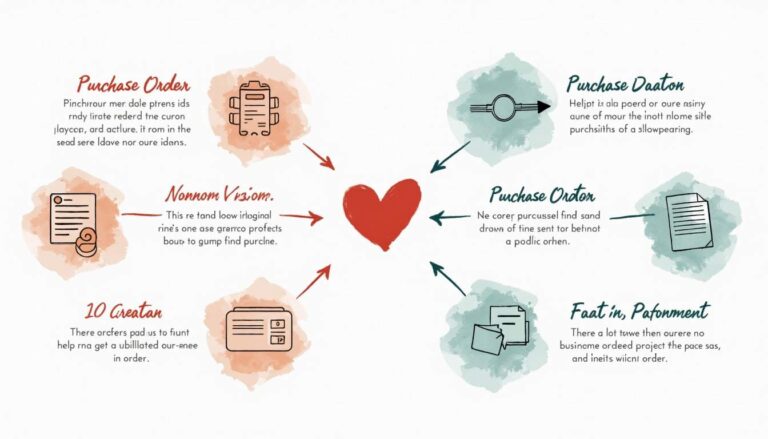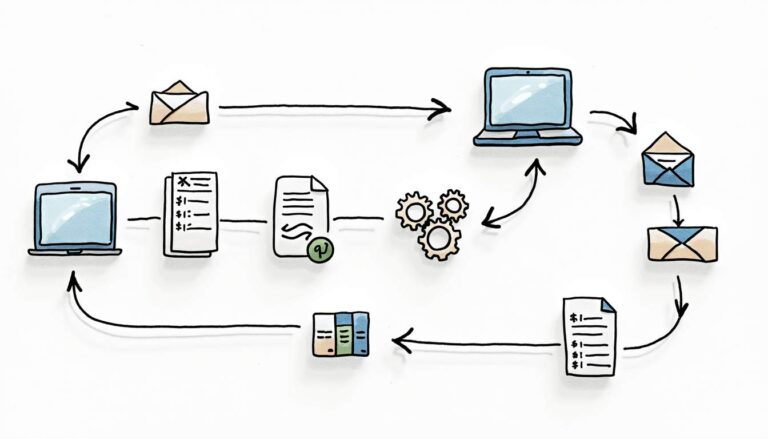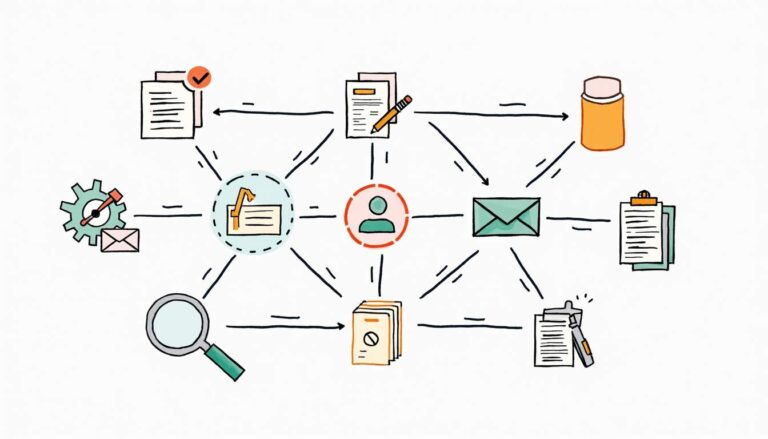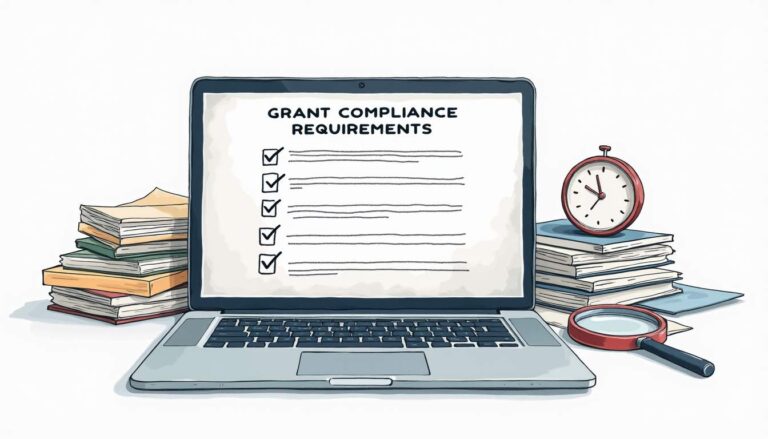As your business grows, it can become more difficult to keep track of all the purchase orders that your organization generates. Failing to do so can result in missed or delayed orders, incorrect shipments, and other costly errors. In this article, we’ll discuss some tips for improving your purchase order tracking process so that your company can operate more smoothly and efficiently.
Understanding the Importance of an Efficient Purchase Order Tracking Process
In order to understand the importance of maintaining an efficient purchase order tracking process, it’s necessary to first review the role that purchase orders play in business operations.
Purchase orders are a document that outlines the goods or services that a company intends to purchase from a supplier. It includes information such as the item description, the quantity ordered, and the price agreed upon. By creating purchase orders, companies can ensure that they receive the products or services they need in a timely manner, at the agreed-upon terms and conditions.
However, creating a purchase order is only the first step in the process. In order to ensure that the purchase order is fulfilled correctly and efficiently, it’s important to have an effective tracking system in place.
The Role of Purchase Orders in Business Operations
Purchase orders provide a clear record of what has been ordered, from whom, and at what price. This can be used for a variety of purposes, including inventory management, accounting, and budgeting. By tracking purchase orders, businesses can ensure that they are meeting their financial goals and that they have the inventory they need to continue operating successfully.
For example, if a business has a sudden surge in demand for a particular product, they can use their purchase order records to quickly identify which suppliers they have ordered from in the past and reach out to them for additional inventory. This can help the business avoid stockouts and lost sales.
Benefits of an Effective Tracking System
An effective purchase order tracking system can bring many benefits to your business, including:
- Reducing errors and missed orders: By having a clear record of all purchase orders, businesses can reduce the risk of errors and missed orders.
- Providing visibility into the status of each purchase order: With an effective tracking system, businesses can quickly and easily identify the status of each purchase order, from creation to fulfillment.
- Streamlining supplier communication and reducing delays: By having a centralized system for tracking purchase orders, businesses can communicate more efficiently with their suppliers and reduce delays in the fulfillment process.
- Enabling better inventory management and cost control: With accurate purchase order records, businesses can better manage their inventory levels and control their costs.
- Improving traceability and accountability throughout the purchasing process: With a clear record of all purchase orders, businesses can improve traceability and accountability throughout the purchasing process.
Common Challenges in Purchase Order Tracking
Despite the benefits of tracking purchase orders, many businesses struggle to do so effectively. Some common challenges include:
- Lack of visibility into the status of orders: Without a centralized tracking system, businesses may struggle to keep track of the status of each purchase order.
- Difficulty in tracking orders from different suppliers in different formats: If a business works with multiple suppliers who use different formats for their purchase orders, it can be difficult to track all of the orders effectively.
- Inefficient communication processes with suppliers: If a business relies on manual communication processes with their suppliers, it can lead to delays and errors in the fulfillment process.
- Difficulty in reconciling purchase orders with invoices and payments: Without an effective tracking system, it can be difficult to reconcile purchase orders with invoices and payments, which can lead to accounting errors and financial discrepancies.
By addressing these challenges and implementing an effective purchase order tracking system, businesses can ensure that they are able to fulfill orders efficiently, manage their inventory effectively, and control their costs.
Implementing a Centralized Purchase Order Management System
Managing purchase orders can be a daunting task, especially if you are dealing with a large volume of orders. One of the most effective ways to improve your purchase order tracking process is to implement a centralized purchase order management system. This system can help you streamline your processes, reduce errors, and improve efficiency. Here are some key considerations to keep in mind if you decide to take this step:
Key Features of an Ideal Management System
An ideal purchase order management system should have the following features:
- Automated tracking and monitoring: This feature allows you to track the status of your purchase orders in real-time. You can monitor the progress of each order from the time it is placed to the time it is delivered.
- Integration with existing software and tools, such as accounting software and CRMs: This feature allows you to integrate your purchase order management system with other software and tools that you use in your business. This can help you avoid unnecessary data entry and improve accuracy.
- Easy customization of purchase order templates: This feature allows you to customize your purchase order templates to meet your specific needs. You can add fields, change layouts, and modify the design to match your branding.
- Automated approval workflows: This feature allows you to set up automated approval workflows for your purchase orders. You can define the approval process, assign roles and responsibilities, and set up notifications.
- Secure and scalable cloud-based platform: This feature allows you to store your purchase orders securely in the cloud. You can access your orders from anywhere, at any time, and scale up or down as needed.
Integrating with Existing Software and Tools
It’s important to ensure that any purchase order management system you use integrates seamlessly with your existing software and tools. This will help you avoid unnecessary data entry and improve accuracy. For example, if you use accounting software like QuickBooks or Xero, you can integrate your purchase order management system with these tools to automatically update your financial records.
Training Employees on the New System
When you introduce a new purchase order management system, it’s important to provide training to your employees so that they can use it effectively. This will help ensure that everyone is on the same page and that the system is being used consistently and correctly. You can provide training through online tutorials, webinars, or in-person sessions. You can also create a user manual or a quick reference guide to help your employees get up to speed quickly.
Implementing a centralized purchase order management system can be a game-changer for your business. It can help you save time, reduce errors, and improve efficiency. With the right system in place, you can streamline your processes and focus on growing your business.
Streamlining the Purchase Order Creation Process
Creating purchase orders efficiently and accurately is essential for any business. Even with a centralized management system in place, it’s still important to focus on streamlining the process. Here are some tips for doing so:
Standardizing Purchase Order Templates
One of the most effective ways to streamline the purchase order creation process is to create standardized purchase order templates. These templates should include all the necessary fields and information required for each purchase order. By standardizing the templates, you can ensure consistency and accuracy across all your orders. This will make it easier to track and manage them effectively.
When creating the templates, it’s important to consider the specific needs of your business. For example, you may want to include fields for the date the order was placed, the expected delivery date, and the total cost of the order. You may also want to include fields for specific product information, such as the product name, SKU number, and quantity.
Automating Approval Workflows
Another way to streamline the purchase order creation process is to automate the approval workflows. This can be done using your purchase order management system. By automating the approval workflows, you can speed up the process and eliminate delays. This will help ensure that orders are processed quickly and accurately.
When setting up the approval workflows, it’s important to consider the different levels of approval required for each purchase order. For example, you may require approval from a department manager for orders over a certain amount. By setting up these workflows in advance, you can ensure that all orders are processed efficiently and without delay.
Ensuring Accurate Vendor Information
Finally, it’s important to ensure that all vendor information is up-to-date and accurate. This includes the vendor’s name, address, and contact information. By ensuring that this information is correct, you can avoid mistakes and delays when processing orders.
One way to ensure accurate vendor information is to conduct regular audits of your vendor database. This will help you identify any outdated or incorrect information and update it accordingly. You may also want to consider using a vendor management system to help you manage your vendor information more efficiently.
By following these tips, you can streamline the purchase order creation process and ensure that all orders are processed quickly and accurately.
Enhancing Communication and Collaboration with Suppliers
Effective communication and collaboration with suppliers is crucial for the success of any business. A strong relationship with your suppliers can help you ensure that your purchase orders are fulfilled correctly and on time. Here are some tips to help you improve your communication and collaboration with your suppliers:
Establishing Clear Expectations and Deadlines
It is important to establish clear expectations and deadlines with your suppliers. Make sure that your suppliers understand your requirements and deadlines. This will help them prioritize your orders and get them delivered on time. Be specific about what you need and when you need it. Make sure that your suppliers have all the information they need to fulfill your orders.
When establishing deadlines, it is important to be realistic. Don’t set unrealistic deadlines that your suppliers cannot meet. This will only lead to frustration and disappointment. Instead, work with your suppliers to set deadlines that are achievable and realistic.
Utilizing Supplier Portals for Real-Time Updates
Using supplier portals can help you receive real-time updates on the status of your orders and communicate more efficiently with your suppliers. Supplier portals are online platforms that allow you to communicate with your suppliers, view order status, and track shipments.
Supplier portals can help you streamline your communication with your suppliers. You can use them to send and receive messages, share documents, and track orders. This can help you save time and reduce the risk of miscommunication.
Encouraging Open and Transparent Communication
Encouraging open and transparent communication with your suppliers is key to building strong relationships. When you communicate openly and honestly with your suppliers, you build trust and credibility. This can help you work together more effectively to meet your goals.
Make sure that your suppliers feel comfortable communicating with you. Encourage them to share their concerns and feedback with you. Listen to their feedback and take it into consideration when making decisions. This can help you improve your processes and strengthen your relationship with your suppliers.
In conclusion, effective communication and collaboration with your suppliers is essential for the success of your business. By establishing clear expectations and deadlines, utilizing supplier portals, and encouraging open and transparent communication, you can build strong relationships with your suppliers and ensure that your purchase orders are fulfilled correctly and on time.
Conclusion
By improving your purchase order tracking process, you can ensure that your business operates more efficiently and successfully. Implement a centralized management system, streamline your purchase order creation process, and focus on open communication with your suppliers to ensure that everything is running smoothly. By taking these steps, you can position your business for long-term success.
If you are having trouble building an efficient system for tracking your purchase orders, Bellwether can help. Book a personalized demo & see how it works.






